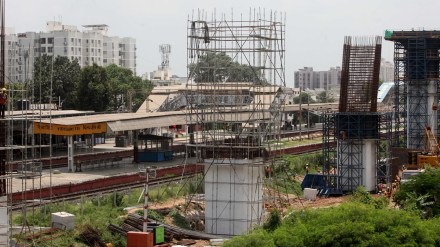The Mumbai-Ahmedabad High-Speed Rail (MAHSR) project, with a sanctioned cost of Rs. 1,08,000 crore, has achieved significant milestones. As of now, 290.64 km of pier foundation, 267.48 km of pier construction, 150.97 km of girder casting, and 119 km of girder launching have been completed. However, the anticipated timeline and final cost can only be determined upon the awarding of all contract packages.
The MAHSR project traverses through the high-growth states of Gujarat and Maharashtra, linking key business hubs such as Mumbai, Surat, Vadodara, and Ahmedabad. According to a feasibility study conducted by the Japanese International Cooperation Agency (JICA), the project’s Economic Internal Rate of Return (EIRR) was estimated to be 11.8%. This update was provided by Shri Ashwini Vaishnaw, the Minister of Railways, Communications, and Electronics & Information Technology, in a written reply to a question posed in the Rajya Sabha on Friday.
Mumbai-Ahmedabad Bullet Train: Unveiling India’s first undersea rail tunnel
India’s pioneering venture into underwater rail infrastructure marks a significant leap in transportation engineering. Spanning 7 kilometers between Shilphata and BKC, this groundbreaking Bullet Train project employs cutting-edge techniques such as the Tunnel Boring Machine (TBM) and New Austrian Tunneling Method (NATM).
The single-tube tunnel is designed to accommodate twin tracks for both up and down lines, accompanied by the construction of 39 equipment rooms at 37 strategic locations along the tunnel route. Distinguished by TBMs boasting a remarkable 13.6-meter cutter head diameter—considerably larger than the typical 5-6 meter diameter cutter heads used in urban tunnels—the project aims to cover approximately 16 kilometers of the tunnel length with three TBMs. The remaining 5 kilometers will be constructed using the NATM.
With depths ranging from 25 to 57 meters below ground level, the tunnel’s deepest point plunges to a staggering 114 meters beneath the Parsik hill near Shilphata. Facilitating construction are three shafts strategically positioned at BKC (under package C2), Vikhroli, and Sawli in the Thane district, at depths of approximately 36, 56, and 39 meters, respectively. Moreover, an inclined shaft of 42 meters at Ghansoli and a tunnel portal at Shilphata will aid in the construction of approximately 5 kilometers of the tunnel using the NATM method.
Construction at key locations underway
Shaft 1 – Mumbai HSR Station: This shaft, plunging to a depth of 36 meters, has completed 100% of its secant piling work and is presently undergoing excavation.
Shaft 2 – Vikhroli: At a depth of 36 meters, Shaft 2 has finalized its piling work and is currently undergoing excavation. It is slated to serve as the entry point for two tunnel boring machines, each set to journey towards BKC and Ghansoli, respectively.
Shaft 3 – Sawli (near Ghansoli): Excavation work is currently underway at this location, which boasts a depth of 39 meters.
Shilphata, Thane – NATM End: This site serves as the NATM end of the tunnel, with portal work already in progress.
ADIT Portal (Additionally Driven Intermediate Tunnel): Construction of this portal is underway to provide additional access to the underground/undersea tunnel, thereby enhancing overall construction efficiency.
